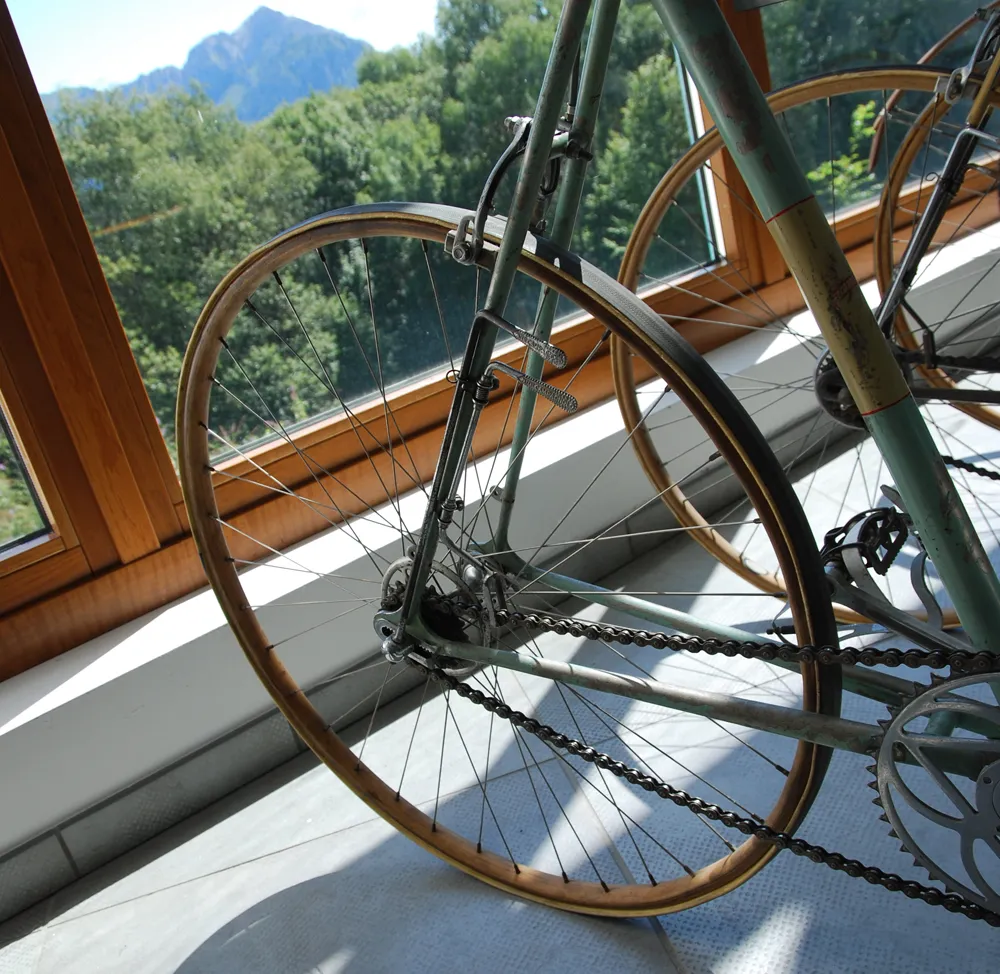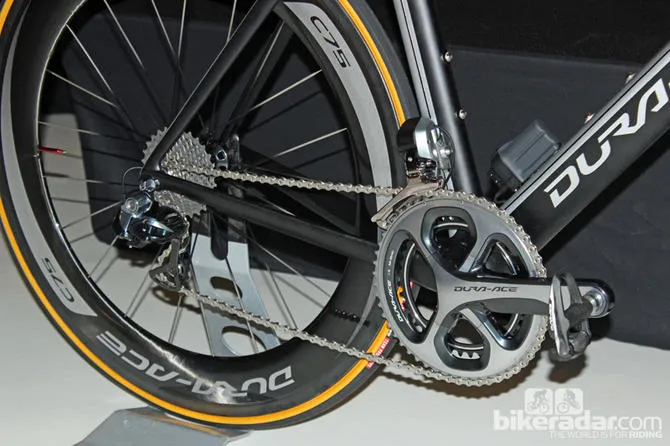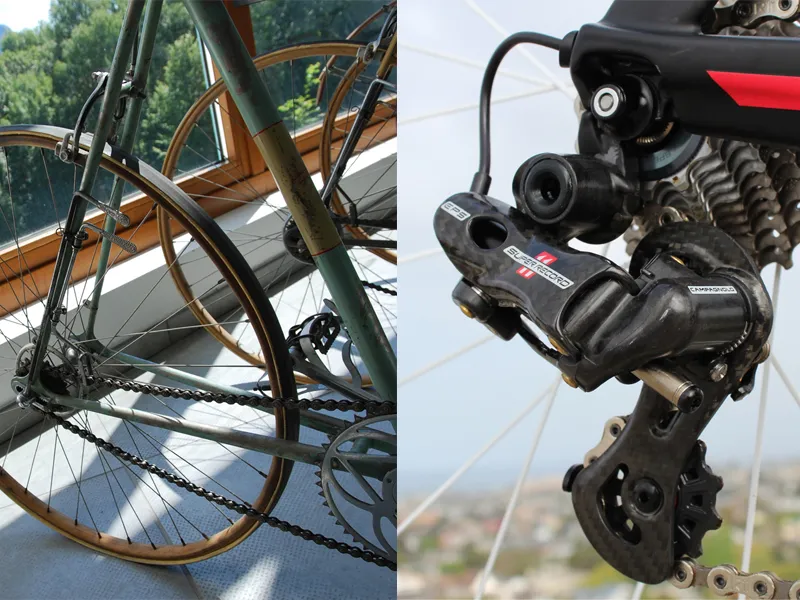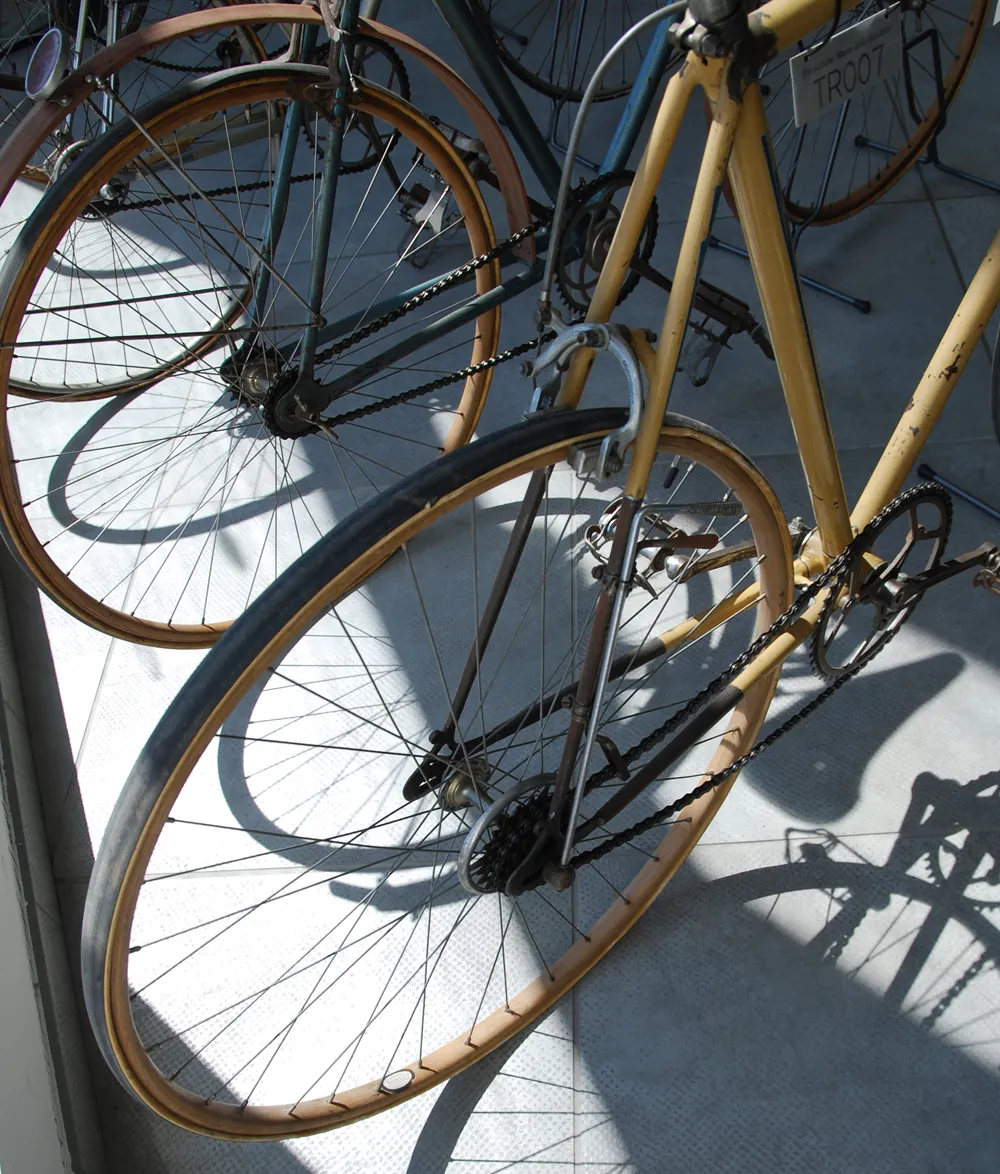The history of the bicycle drivetrain is complex, but its modern form goes back to the first “safety bicycle” known as the “Rover,” which was developed in 1885 by John Kemp Starley. It was a far cry from the carbon-fiber bikes with electronic drivetrains of today, and was actually the second serious attempt to create a rear-chain-drive bicycle, but Starley’s design won out as he also developed a steerable front wheel, equally sized wheels and the chain drive to the rear wheel, thus creating the evolutionary track that most bicycle design has taken in the ensuing 127 years.
The drivetrain system improved over the years with the addition of gears. In the earliest days riders had to dismount to change gears. Among the first methods of two-speed bicycles was a wheel with a sprocket on each side of the hub, and to change gears riders had to remove the wheel, flip it around and remount the bike.
But the gears have long been turning.
“As early as 1868 a wheel was described which would create varying reactions to the rotation of the pedal as compared to the rotation of the front wheel therein the pedal may go around one time while the wheel would go around two times or the opposite,” said Jim Elking of the Bicycle Museum of America.
“In 1871 James Starley invented the Ariel which was probably the first geared bike,” Elking told BikeRadar. “In 1868 and 1869 there were three patents for variable gears on front-wheel-drive velocipedes.”
Additionally, in 1870 it was written in Le Cyclist that a Dr. Mathieu had used a two-speed bike built by Barberon & Meunier, who also built a three-speed system.

Early derailleurs featured large mechanical levers to move the chain
“This was probably the precursor to the modern derailleur,” added Elking. “It was reported that between 1877 and 1906 in London there were 750 patents for variable speed gearing, however, they were not commercially desirable. Most people were satisfied with their single speeds. In 1895 Frenchman Jean Loubeyre patented a device for derailing the chain from one sprocket to another. He called it the Polyceler (multispeed).”
The derailleur was developed in France in the early 20th century, but it wasn’t actually until the 1930s that European racing organizations allowed gearing to be used. The derailleur system was introduced in the Tour de France for the first time in 1937, but one of the biggest changes came in 1949 when Campagnolo introduced its Gran Sport, a refined cable-operated parallelogram rear derailleur.

The cable-operated parallelogram was a big step forward
The next big shift in gears was in the mid-1980s when Shimano’s systems required compatibly between shift levers, derailleur, cassette, chain rings, chain, shift cable and housing. This end the era of mix-and-match components, leaving just a handful of companies in business. Shimano offered another massive shift when it released its Rapidfire shifting to mountain bikes in 1989, which brought indexed shifting to handlebars, and then again in 1990 with the introduction of Shimano Total Integration (STI) levers for road bikes, which integrated the brake lever and shifter on the handlebar.
But what really did STI offer? For one it made riding a little safer.
“The most dramatic difference is the safety factor,” said Elking. “Even a minimal cyclist can imagine how much less dangerous it is to be able to shift without removing your hand from the handlebars. The down tube shifters and the bar ends both required removing a hand from the handlebar.”
“This action results in less ability to hold one’s line and maximize that by a peloton of 30 plus riders doing the same thing at very close to the same time and you have a problem,” added Elking. “Other advantages include more rapid shifting, faster acceleration due to being able to get to a lower gear quickly while pedaling, and the ability to maintain a steady cadence by quickly finding the correct gear.”
At the same time another Japanese bike component maker, SunTour, introduced something completely different with its Browning Electronic AccuShift Transmission, a triple chainset that utilized a relay to aid the shifting of the gears. This followed attempts to go electric with efforts coming from Mavic in 1992 with its Zap electrically controlled gear mechanism, but it wasn’t until Shimano and Campagnolo introduced their respective systems that the pros took notice.
In 2009 Shimano introduced its revolutionary Di2 electronic shifting system.
“When Di2 was created by Shimano and first introduced in Dura-Ace 7970, Shimano was looking for a way to advance mechanical shifting performance somehow for elite level riders - and an electronic shifting system that is also an intelligent system was the end result,” said Eric Doyne, Shimano spokesman.
The Di2 system, which is now available at the Ultegra level as well, offers precise shifting without any potential for degradation in performance due to cable stretch, wear or collecting debris.

Shimano's forthcoming 9070 Dura-Ace Di2 electronic system
This same type of precision is offered by Shimano rival Campagnolo, which rolled out its own electronic shifting system, Electronic Power Shift (EPS).
“Once the EPS is set up on the bike, there is no further adjustment required; it shifts perfectly every time,” said Tom Kattus, general manager of Campagnolo North America Inc. “By holding down the shifter button, you can shift the entire 11 speed cassette in 1.5 seconds. Ease of shifting is also greatly increased with EPS due to the short lever throw. The front derailleur shifting is significantly faster than mechanical and you can shift under full pedal load with surgical precision. The battery life is usually good for 2,000km of riding and can be fully recharged in 3 hours.”
Campagnolo had been developing electronic shifting since 1992, Kattus told BikeRadar.
“In the early years of development, the electronic components and circuit boards required were too large, heavy and bulky to really make the project feasible at the time,” added Kattus. “Tech has caught up and improves every day allowing us to bring a fantastic product to market.”
One initial knock against Di2 was the weight, but for 2013, the new Dura-Ace 9070 Di2 version is lighter than the Dura-Ace 9000 mechanical system (which is 11-speed) for the first time. The new Di2 Lithium Ion batteries are lighter, too — 71g for the standard battery and 50g for the new internal seat post battery.
Shimano and Campagnolo will continue to support their mechanical groups, too. And there is also the lightest mechanical option on the market from SRAM, with its top-end Red group. When it comes to shifting gears, SRAM is focusing on ergonomics as well as light weight and performance.
“SRAM Red shifters allow you to customize your brake and shifter lever reach to fit your hands, with easy to access and adjust Independent Reach Adjust,” said Bill Keith, global product manager for road and triathlon at SRAM. “Proper fitment of a bike is not just a modern trend, it is a performance necessity. The shifter controls are the most critical contact point of the bike, and SRAM Red‘s independent shifter and lever reach are the absolute best way to achieve precise fit adjustments.”
At present, SRAM offers 10-speed cassettes while Shimano and Campagnolo offer 11-speed options. And in mid-December, the small component firm Tiso has began showing designs for its electronic 12-speed system.
What bicycle shifting will look like in another 100 years is anyone's guess.


